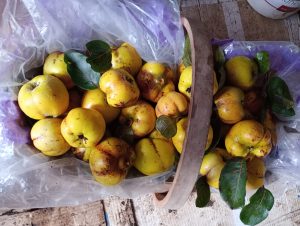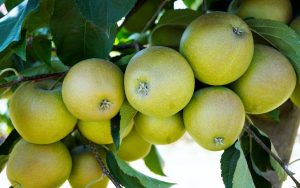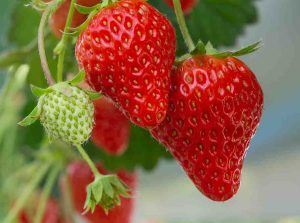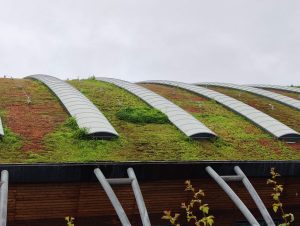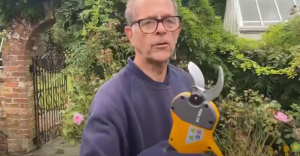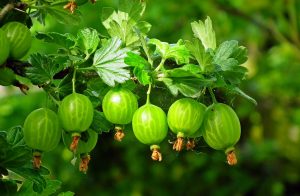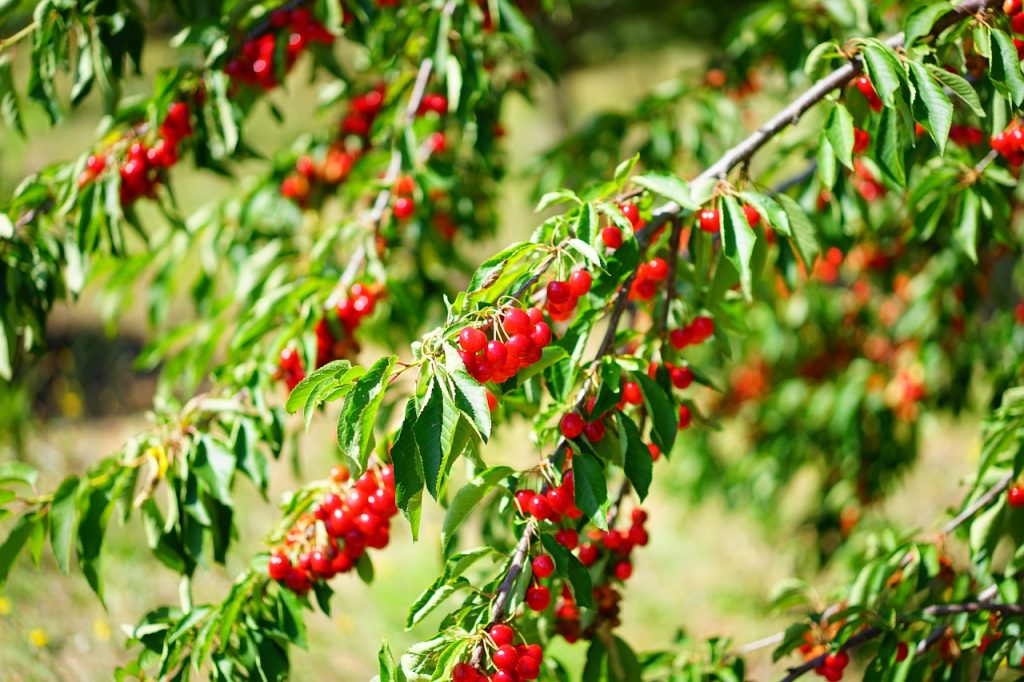
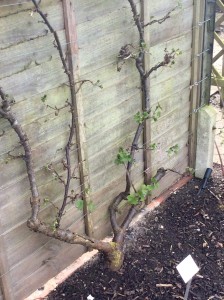 We’re just at the tail end of the pruning season for apples, pears and soft fruit such as raspberries and gooseberries. For stone fruits such as cherries and plums there’s still time as these aren’t really pruned until they are well and truly showing growth, usually July/ August to avoid bacterial canker and silver leaf.
We’re just at the tail end of the pruning season for apples, pears and soft fruit such as raspberries and gooseberries. For stone fruits such as cherries and plums there’s still time as these aren’t really pruned until they are well and truly showing growth, usually July/ August to avoid bacterial canker and silver leaf.
Key to pruning apples and pears for the garden is to always remove dead, diseased and damaged growth, any suckers from the rootstock, reducing crossing branches by cutting back to outward facing buds and light shaping of the overall canopy.
For summer fruiting raspberries cut out last years growth and tie in vigorous canes into a support system leaving around 10-15cm between each cane. Take out weak growth as the tops can be bent over the top wire and tied to it.
Make sure ALL canes are securely attached to supports to avoid any damage during the season. I’d then remove any growth creeping into paths as these can be used to plug any gaps in the row. Feed with a high potash feed and personally I use Top Rose at a rate of 50-100g/m2. Lastly, apply a healthy layer of well rotted organic matter to a depth of 10cm. Autumn varieties can be cut hard to the ground as they flower and fruit on present seasons growth.
For blackberries and other hybrids treat in a similar way to summer fruiting raspberries by removing last years growth and then tying in the shoot growth to a support system by weaving the growth between the top wire and middle wires. Tie in to secure stems.
With blackcurrants minimal pruning is required. You’re looking at developing a goblet shaped plant. Only remove central older stems if supported by new growth at its base. Any growth growing towards neighbouring plants is cut back to the ground or to where there is an outward facing bud.
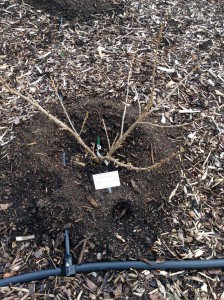 Gooseberries, red and white currants can all be treated together. These all produce flowers and fruit on spurs and again you are looking at developing a goblet shaped plant. Work logically round the plant by taking each branch leader, pruning hard any side/ lateral growths to 1-2 buds and tipping leader. With gooseberries try to maintain a clear ‘leg’ to enable good air flow and reduce powdery mildew. The leg is an area of clear stem between soil level and where the canopy of the plant begins; its roughly 15cm in length.
Gooseberries, red and white currants can all be treated together. These all produce flowers and fruit on spurs and again you are looking at developing a goblet shaped plant. Work logically round the plant by taking each branch leader, pruning hard any side/ lateral growths to 1-2 buds and tipping leader. With gooseberries try to maintain a clear ‘leg’ to enable good air flow and reduce powdery mildew. The leg is an area of clear stem between soil level and where the canopy of the plant begins; its roughly 15cm in length.
Why not try blueberries this year in pots if you haven’t got acid soil. If buying plants for the first time plant them in pots at least 75 x 75cm and do not prune for at least 2-3 years as this will enable the plant to produce a great framework to support flowers and fruit. Feed during the growing season with liquid feeds high in potash. If yellow young leaves develop drench plant with any products containing sequestrene (contains iron) and mulch the top of the pot with ericaceous compost.
Good luck and happy gardening!
Tom Cole is former senior horticultural lecturer at ARU Writtle College.




